In the soggy, early morning hours of April 22nd, 1956, a team of Soviet and East German soldiers began to dig at the muddy municipal cemetery in Altglienicke, East Berlin. The spring season had been exceptionally rainy, causing many short circuits in Berlin’s telephone network. The soldiers’ assignment was to unearth a buried telephone cable and check for damage. When they reached the cable, however, they made a surprising discovery: the cable had been wiretapped and rerouted into a secret tunnel.
Operation GOLD
Code-named “Operation GOLD,” the Berlin Tunnel mission was a secret tunnel constructed beneath the city of Berlin by the CIA and British Secret Intelligence Service (MI-6) in order to clandestinely intercept communications from the Soviet Union. The East German capital was the center of a Soviet communications network connecting key European nodes and extending well into Russia.
It was an audacious operation in both scope and skill.
Although a mole threatened the entire mission, historians consider the Berlin Tunnel one of the greatest intelligence successes of the Cold War.
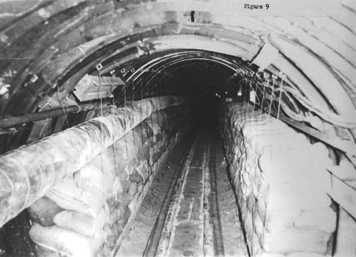
The Berlin Tunnel
Why Berlin?
During the Cold War, monitoring and thwarting Moscow’s influence worldwide was the top priority for CIA and our allies.
In the 1950s, before reconnaissance satellites, wiretaps were one of the essential ways the Agency collected intelligence on Soviet military capabilities. The Soviets had shifted from radio to landline telephones for most military traffic, transmitting both encrypted messages and non-secure messages. Almost all of the communications between Moscow (Russia), Warsaw (Poland), and Bucharest (Romania) went through Berlin, making it the perfect target.
The only problem: East Berlin was one of the most heavily guarded cities in the world.
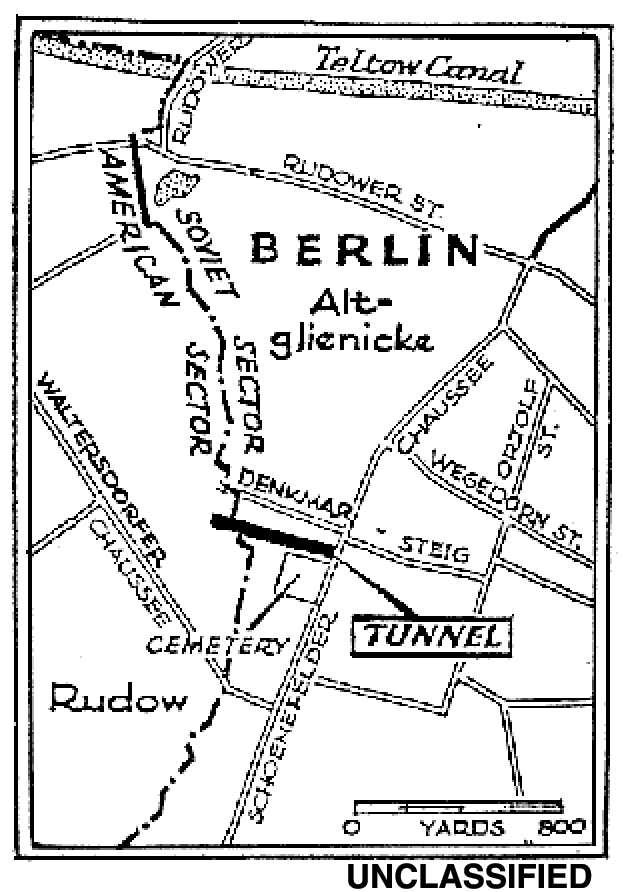
Map of Berlin showing where the Berlin Tunnel was located
Spies Beneath the City:
The CIA and MI-6 believed tunneling from West Berlin to the underground cables in nearby East Berlin was feasible, and that they could tap the Soviet communications’ lines securely and without anyone noticing.
In January 1954, then-CIA Director Allen Dulles approved the covert tunneling and tapping operation. The CIA used a U.S. Air Force radar site and warehouse in West Berlin as cover for the construction of the tunnel.
Digging the Tunnel:
The Air Force radar site, which was roughly the size of an average city block, was fenced with chain-link high security fencing and contained a warehouse that served as the main operations building for the mission.
The first big obstacle—what do with all the dirt?
After many weeks of debate, it was decided they’d create a special basement in the warehouse for the purpose of storing all the dirt. During the tunnel’s construction, over 3,000 tons of soil was removed.
The warehouse also contained a combined kitchen-dining facility and barracks, and another building, which housed three diesel-driven generators to provide power for all the facilities.
The soil was quite sandy, so to avoid potential cave-ins, technicians decided that the tunnel should be lined with steel. Near the entrance where there was the greatest chance of collapse, a metal “shield” was devised so that even if dry sand was encountered, the danger of a cave-in would be virtually eliminated.
The tunnel liner was formed from sections of heavy steel plate constructed so that, when bolted together, five sections formed a steel ring approximately six feet in diameter and 15 inches long. The men worked under the cover of the shield, and when a sufficient amount of material had been excavated, the shield was forced forward with hydraulic jacks and a new section of liner was put in place. 125 tons of steel liner plate were used to line the tunnel.
Construction took a year.
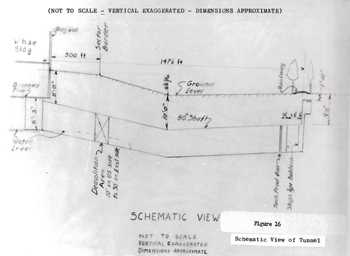
Schematics of the Berlin Tunnel
The finished tunnel was 1,476 feet long—roughly the length of the Reflecting Pool in front of the Lincoln Memorial. One half sloped down, while the other half sloped up. British technicians installed the taps, and collection began on May 11th, 1955.
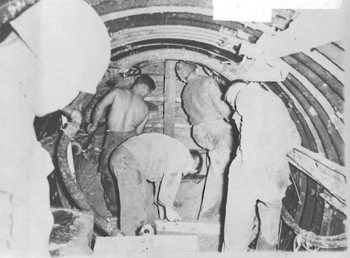
Tunnelers removed 3,100 tons of soil (enough to fill 20 average American living rooms!) and used 125 tons of steel plate, and 1,000 cubic yards of grout.
A Mole in Our Midst:
Unknown at the time to CIA and MI-6, the KGB—the Soviet Union’s premier intelligence agency—had been aware of the project from its start.
George Blake, a KGB mole inside MI-6, had told the Soviets about the secret operation during its planning stages. But to protect Blake, the KGB allowed the operation to continue until April 21, 1956 (April 22 in Berlin) when they “accidentally discovered” the tunnel while supposedly repairing faulty underground cables—without putting Blake at risk.
The Soviets planned the discovery in hopes of winning a propaganda victory by publicizing the operation. But their plan backfired when, instead of condemning it, most press coverage marveled at the audacity and technical ingenuity of the operation.
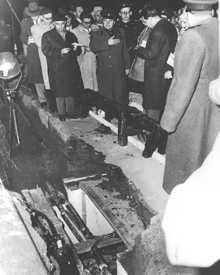
Photo from the press conference of the tunnel’s “discovery” by the Soviets.
Intelligence Success or Failure?
The Berlin Tunnel was CIA’s most ambitious operation conducted at the time. But was it a success?
Most intelligence and foreign policy experts do consider it a huge success. The tunnel yielded valuable intelligence for U.S. policymakers and the U.S. military, such as:
- Order of battle and information on the activities of Soviet and Warsaw Pact forces, including the Soviet’s lack of action regarding a military invasion of Western Europe.
- Identification of workers on Soviet atomic energy projects and early warning of the Soviet’s establishment of an East German army.
- The poor condition of East German railways, resentment between the Soviets and East Germans, and growing tensions in Poland.
Because the Soviets knew about the tunnel’s existence since its inception, many historians assumed any intelligence collected would have been fake. However, studies conducted years later show that the Soviets had not attempted to feed false information over the Berlin Tunnel’s tapped lines. The intelligence collected, as far as CIA can tell, was genuine.
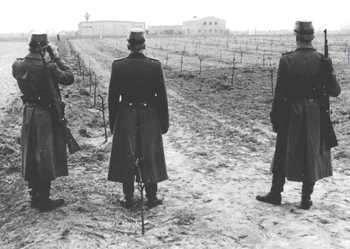
Soviet soldiers observing the U.S. Air Force warehouse concealing the Berlin Tunnel
In the end, the Berlin Tunnel produced:
- 50,000 reels of tape
- 443,000 fully transcribed conversations
- 40,000 hours of phone conversations
- 6,000,000 hours of teletype traffic
- 1,750 intelligence reports
Following the tunnel’s shutdown, processing of this immense volume of data took more than two years to complete.
Interested in learning more about the Berlin Tunnel? Check out our FOIA Electronic Reading Room where you can explore declassified intelligence documents about the operation: Berlin Tunnel | CIA FOIA (foia.cia.gov)
